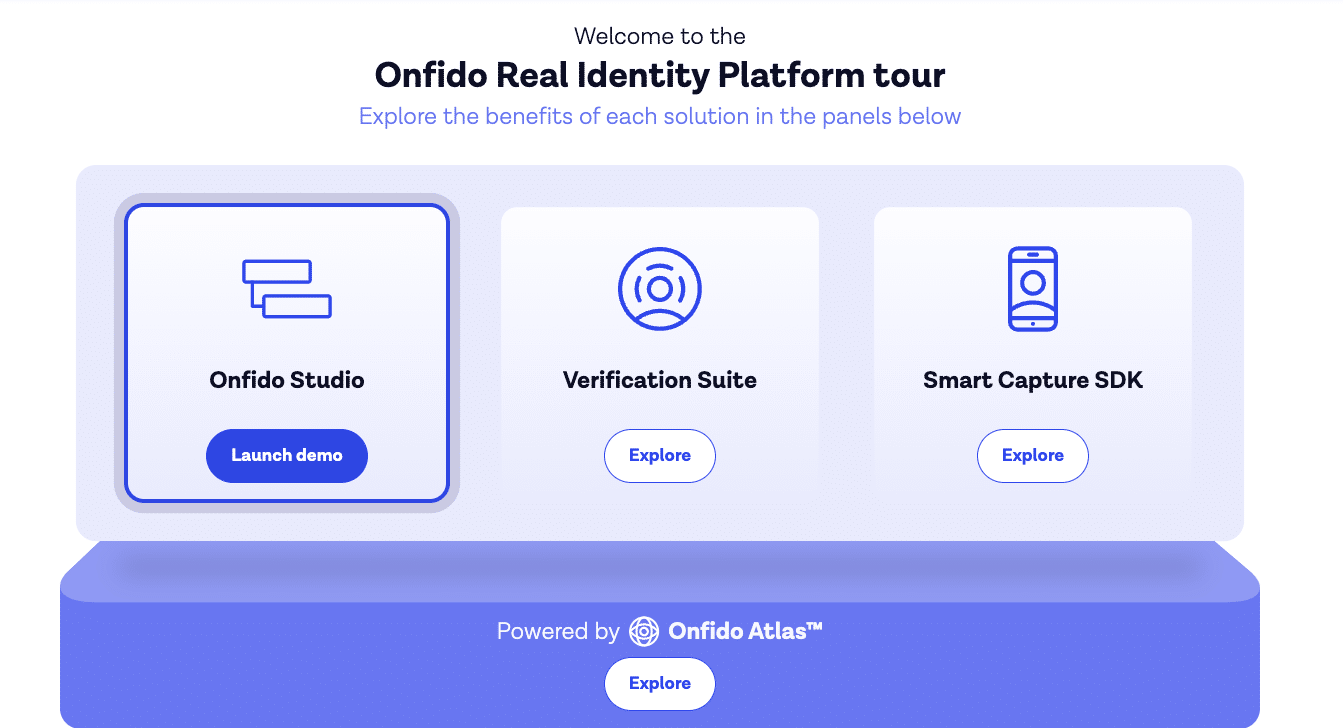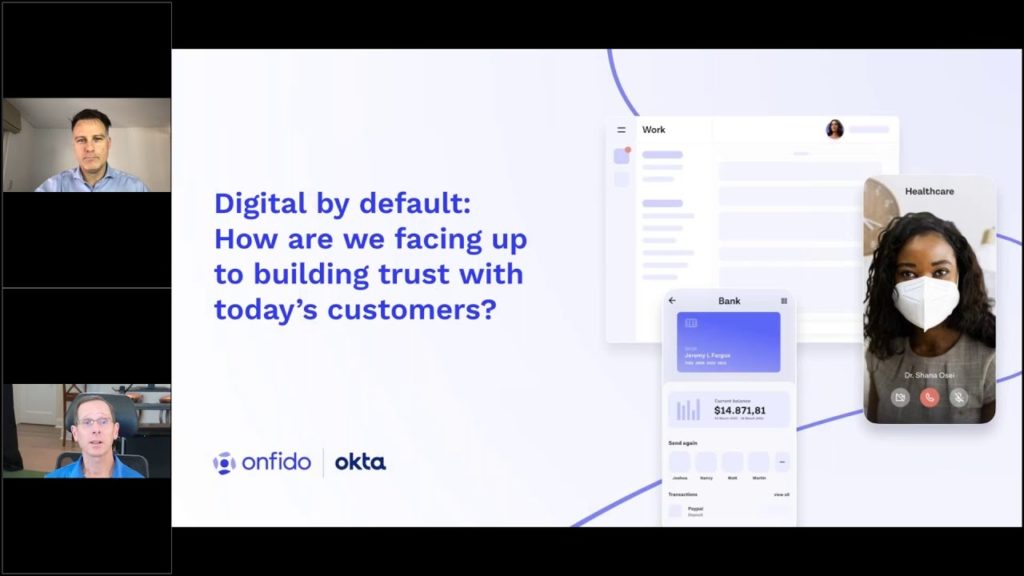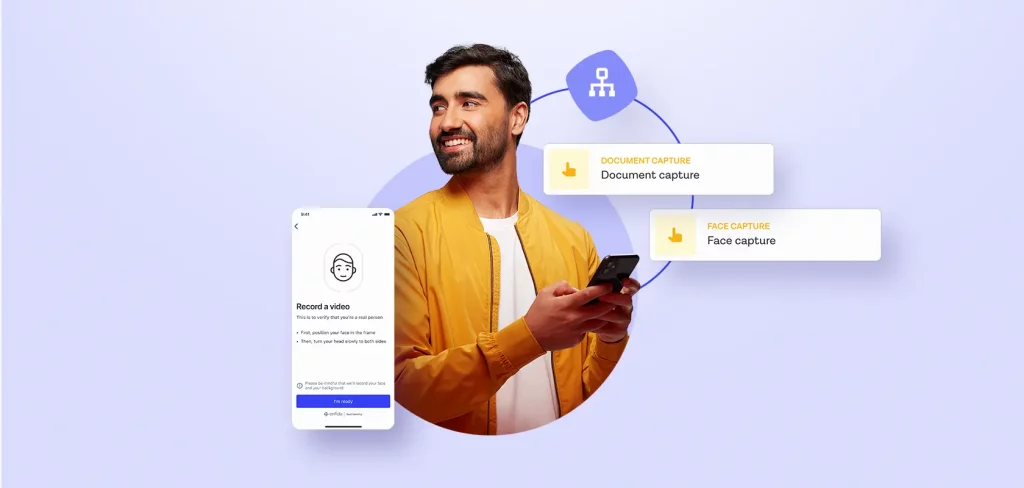"Digital identity and the future of onboarding" webinar featuring Onfido, Venable, and Women in Identity.
The term onboarding refers to bringing on new customers and opening accounts — like at banks or other commercial services. Before the digital era, onboarding would have almost always required a trip to a branch or physical store, in order to complete paperwork, show identity documents and other procedures. As the world moved online and digital by default, businesses have had to pivot to digital onboarding, and create the necessary online infrastructure to do everything from account opening to digital identity verification. Although the switch presented challenges at first, it's now clear that digital onboarding offers numerous business benefits, from enhanced fraud prevention to lower costs to a better and faster user experience.
What is digital onboarding
Digital onboarding is the process of collecting the information needed to add new customers and accounts to a business, completely online. This can include asking the new customer to fill out forms, answer questions and verify their identity using a variety of methods including document verification by sharing their ID document or biometric verification. Part of digital customer onboarding might also include data verification, checking their information against trusted databases. These processes help a business know who is on the other side of the screen, leading to trusted relationships. Digital onboarding is also faster and more convenient for the customer. They can open an account from anywhere including the comfort of their homes, and new technology and AI-powered identity verification solutions can take mere seconds.
The digital onboarding benefits extend to the opportunities opened by using a digital device to onboard: passive signals can be checked such as geolocation, device integrity, IP address and other fraud detection signals.
What is digital onboarding in banking
Banks, like other financial institutions, are highly regulated industries that must follow compliance regulations and be certain of who they’re doing business with, to avoid facilitating money laundering and other financial crimes. Digital onboarding in banking must fulfill know your customer (KYC) processes as part of anti-money laundering (AML) requirements.
Digital onboarding in banks will therefore necessarily have a fraud detection component. A high-assurance digital onboarding process for banks will conduct rigid identity verification procedures as the first step in KYC due diligence. This is to ensure that the person claiming an identity really is who they say they are, and the ID is genuine and not tampered with. This process can include checking passive device signals, trusted database checks, document verification and biometric verification. The database validation also confirms if the new customer has any adverse media, is sanctioned, or classed as a politically-exposed person (PEP).
For most customers, the digital onboarding benefits in banking mean they can easily and quickly open an account in the comfort of any location, with simple, seamless procedures to verify their identity and fill in their information. And for the bank, that means more customers onboarded faster for lower costs and better fraud protection.
What is KYC onboarding
Imagine if anybody could open an account with a bank or a business without going through verification procedures — it would open the doors for crime to run rampant and businesses would face all kinds of financial, security and compliance liabilities. It’s obvious that a business needs to know who their customer is and establish trust. KYC procedures protect businesses, their customers, and are quite often regulatory requirements. The more regulated an industry is — like financial services — the more important KYC processes are.
KYC is often done at the first contact a business has with a customer: onboarding. Before giving a customer access to services like depositing and moving funds, they must ensure they know and trust who this customer is. KYC onboarding will include checks like document verification and biometric verification. Now with digital onboarding, customers can complete eKYC procedures online.
As banking and other services have moved online, documents can be uploaded as images and verified by AI within seconds. A business can choose to ask a customer to take a selfie picture or liveness video and AI will check that this is a real person, and their facial biometrics match the ID that was presented. KYC onboarding may also check sanctions and watchlists and for adverse media and PEPs.
How to digitize onboarding
How can a business move onboarding from a physical location where an employee does identity verification and manually opens an account, to digital onboarding? Technology and systems must be put in place that maintain security, accuracy and fairness. Digitizing onboarding may include an identity verification component, for KYC and AML compliance. There are many steps to digitize onboarding:
Digital onboarding checklist
Collect a user’s information
First, a business will ask a user for their personal identifying information (PII). This can be their name, address and other details. The user will enter them digitally into a form or follow prompts online.
Verify the user’s identity
The business must digitally check that the identity being claimed or presented really belongs to the person trying to open the account. They can run database checks or ask for an image of the identity document, and for more high-assurance verification, match a user’s biometrics (such as with facial recognition) to the ID document.
At this step, a business may lack the technology to undertake these checks. Digital onboarding vendors like Onfido offer an end-to-end custom identity verification option to eliminate the need to stitch together multiple vendors or solutions, making it simple for both the business and their customer.
Open the account
Once a business has established who they’re doing business with, the digital onboarding is complete.
Digital onboarding benefits
Businesses and customers alike have had to transition to digital onboarding in an online world. But now that they have, the benefits of digital onboarding have become more clear. Technology not only convenience and speed, but many business benefits. Automation frees up manual teams to work on more important business functions. The power of AI means that customers are onboarded faster and for lower costs. And fraud detection is elevated by reading device signals and sophisticated AI checks of ID images and facial biometrics.
The Onfido Real Identity Platform offers businesses digital onboarding solutions to meet their needs. Choose a custom blend of checks from our Verification Suite and orchestrate tailored no-code verification journeys for digital onboarding with Onfido Studio. All powered by Onfido Atlas™, our award-winning AI, offering global coverage of more than 2,000 identity documents in 195 countries. So you have a trusted partner from local digital onboarding to scaling globally, seamlessly.
Click below to learn more about the Real Identity Platform, take a tour or try out an interactive demo.






